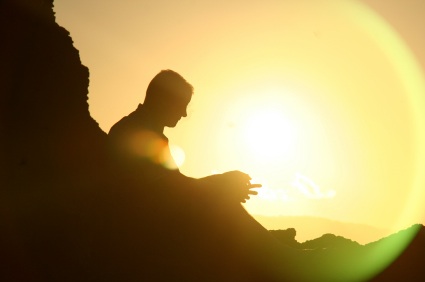A headnote from us: These days we are locating the people and projects we come across on our Roadmap. These contributions from Miki Kashtan are easily, and centrally located: she is speaking to point four, “Practice personhood” in the inner circle of the map — a ringside seat!
———–
by Miki Kashtan
New to this blog? Read Miki’s Introduction to this series ‘All -in: fully committing to a life of nonviolence’ before getting started. Check in every other week on Mondays for a new commitment and practice for daily living. If you feel called, please comment on posts and engage with one another.
 Empathic Presence: even when others are in pain, disconnected from themselves, expressing intensity, or in judgment, I want to maintain a relaxed presence with their experience. If I find myself attempting to fix, offering advice, or turning my attention elsewhere, I want to seek support to regain my faith in the transformative power and the gift of just being with another.
Empathic Presence: even when others are in pain, disconnected from themselves, expressing intensity, or in judgment, I want to maintain a relaxed presence with their experience. If I find myself attempting to fix, offering advice, or turning my attention elsewhere, I want to seek support to regain my faith in the transformative power and the gift of just being with another.
Although most people appreciate being heard, far fewer are able to provide this experience, especially when someone is in distress. As French philosopher and mystic Simone Weil said:
“The capacity to give one’s attention to a sufferer is a very rare and difficult thing … Nearly all those who think they have the capacity do not possess it.”
Although we appear to be hard-wired for empathy, we are habituated to acting on it rather than showing it. What makes it so hard to offer our gift of presence?
When we care for our fellow humans, we often show it by aiming to “make them feel better.” We do this partly because of habit and partly because of discomfort about display of emotions, about people being in pain, or about people expressing themselves in ways that are not aligned with our norms or values. This kind of discomfort is part of what delays our integration of the magical power of pure empathic presence even when we learn and practice it. We forget that pure presence in and of itself provides relief from being alone, clarity and self-connection, and perspective and understanding. As Thich Nhat Hanh says, just listening already alleviates a lot of suffering.
Empathy is often blurred with identification or sympathy, believing it to be about feeling what the other feels, as if being with a depressed person means we will get depressed. If, instead, we can remember that empathic presence is about allowing the other person to have their experience rather than about being with our reactions, we can strengthen our trust in the magical power of presence.
remember that empathic presence is about allowing the other person to have their experience rather than about being with our reactions, we can strengthen our trust in the magical power of presence.
Finding our way to full embodiment of empathic presence invites us to stretch our comfort zone and heal whatever has made it challenging to be present with intensity. In that way, cultivating empathic presence also becomes a vehicle for becoming more of ourselves, less fearful, and stronger.
Practice:
1) Experiment with putting your attention deliberately on what you ate for breakfast, next on a sweet memory, a person you love, a challenge you had in the last 24 hours, or anything else of your choosing. Notice the experience of moving your attention from place to place and develop the capacity to do so at will. Then practice in real life, simply putting your attention on anyone who speaks to you instead of your reaction; 2) Find a practice partner and listen to each other for a few minutes each, without saying anything, then take a minute to put in words what the other person is saying, without inserting any of your own experience or perspective.
 Miki Kashtan is a co-founder of Bay Area Nonviolent Communication (BayNVC). She is inspired by the role of visionary leadership in shaping a livable future, and works toward that vision by sharing the principles and practices of Nonviolent Communication through mediation, meeting facilitation, consulting, and training for organizations and for committed individuals. Miki blogs at the Fearless Heart. Her articles have appeared in Tikkun magazine (e.g.Wanting Fully Without Attachment), Waging Nonviolence (e.g. Pushing the powerful into a moral corner at India’s Barefoot College), Shareable, and elsewhere.
Miki Kashtan is a co-founder of Bay Area Nonviolent Communication (BayNVC). She is inspired by the role of visionary leadership in shaping a livable future, and works toward that vision by sharing the principles and practices of Nonviolent Communication through mediation, meeting facilitation, consulting, and training for organizations and for committed individuals. Miki blogs at the Fearless Heart. Her articles have appeared in Tikkun magazine (e.g.Wanting Fully Without Attachment), Waging Nonviolence (e.g. Pushing the powerful into a moral corner at India’s Barefoot College), Shareable, and elsewhere.








